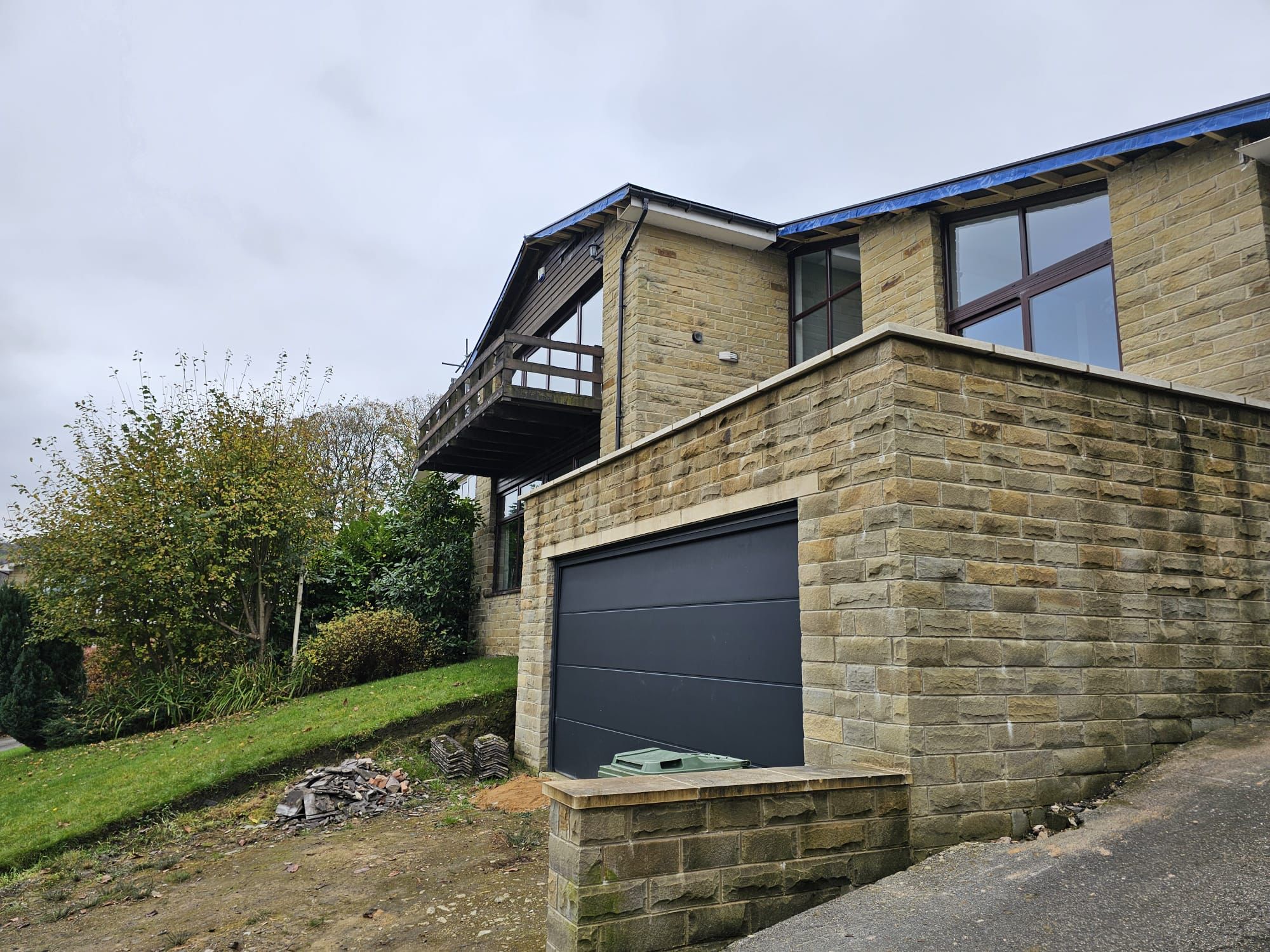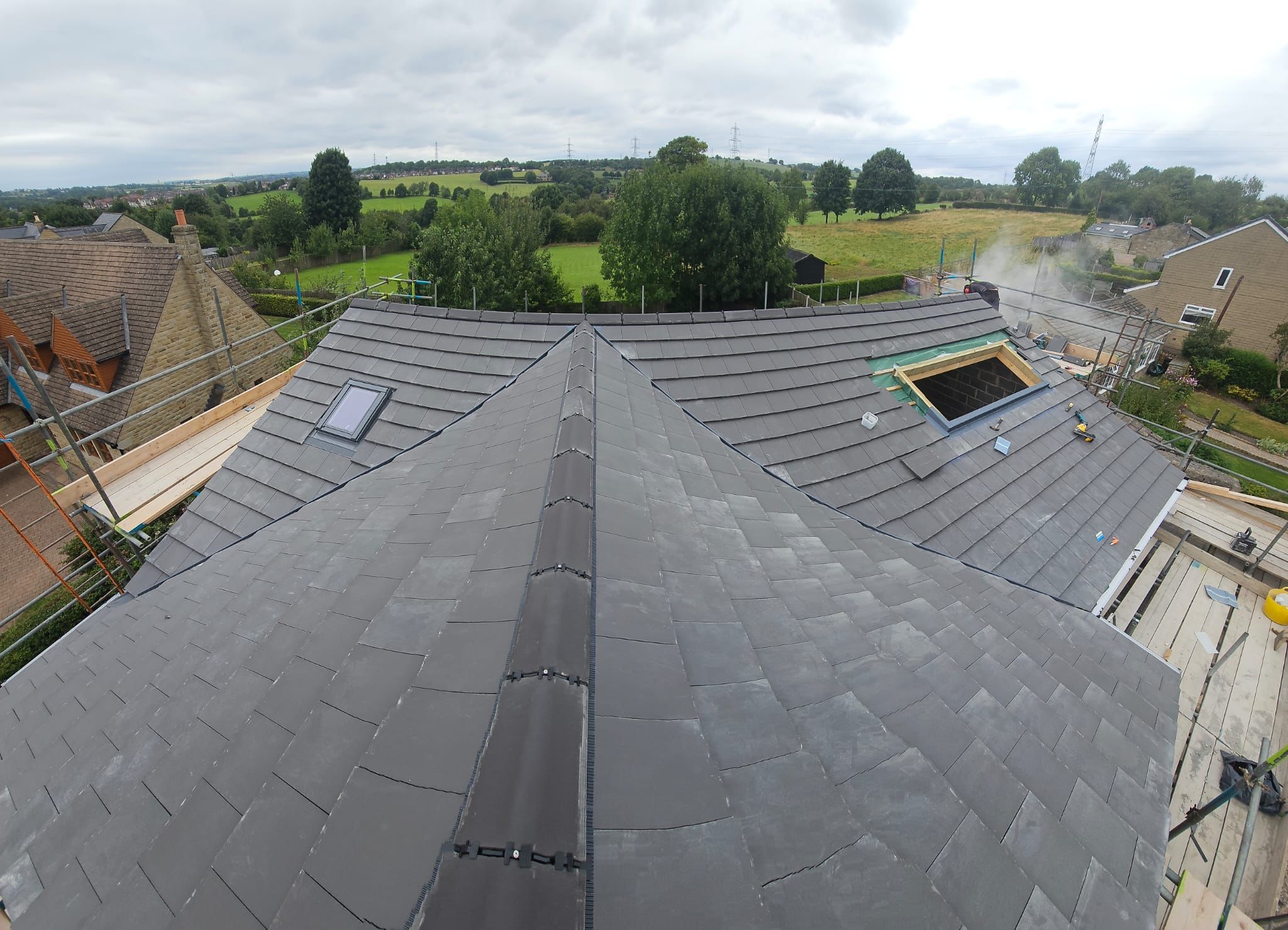Choosing a building firm is one of the most critical decisions for homeowners and property owners embarking on a construction or renovation project. With increasing complexities in commercial construction projects, home improvement, and general building services, mistakes such as cost overruns, poor quality work, and ineffective project management can jeopardise your investment. D H Lumb Building and Roofing Services, with over 18 years of industry experience, understands the importance of due diligence, proper contractor selection, and clear project specifications to ensure delivery is smooth, safe, and regulatory compliant. This article examines the top five issues encountered when hiring a building firm and explains how to avoid them. Topics include budget management, communication breakdowns, contractor experience, unrealistic timelines, and poor quality work. By analysing each factor with actionable strategies and real-world examples, property owners in Heckmondwike and areas like Cleckheaton, Batley, Dewsbury, and Mirfield can achieve successful construction outcomes while protecting their investment.
What Are the Main Causes of Cost Overruns in Construction Projects?
Cost overruns are primarily caused by unforeseen circumstances, poor planning, and inaccurate cost estimation. Incomplete blueprints, unexpected material cost changes, and client-driven design modifications increase labour and material expenses. Inefficient project management—such as inadequate contingency planning and miscommunication within the construction team—often leads to scheduling delays and extra costs. External influences like regulatory changes and supply chain disruptions further compound project expenses.
How Can You Identify Potential Budget Blowouts Early?
Early detection of budget issues is vital. Regular reviews and a detailed cost tracking system help reveal discrepancies. A breakdown of every line item in the estimate, coupled with monitoring material price trends and comparing contractor quotes against industry benchmarks, is essential. For instance, a 15% deviation between estimated and actual costs should prompt an immediate review. Using project management software and consulting an independent cost expert can also help catch issues before they escalate.
What Strategies Help Prevent Unexpected Construction Costs?
Preventing unexpected costs starts with rigorous planning and research. Obtaining multiple quotations, verifying contractor references, and ensuring permits and regulatory compliances are in place are critical steps. Including a contingency fund—typically 10-20% of the budget—provides a necessary buffer. A clear, detailed contract outlining scope, timelines, and change order processes, along with regular progress meetings, further helps keep the project on track. Utilizing real-time budgeting tools adds an extra layer of control.
Why Is Detailed Budgeting Essential for Avoiding Cost Overruns?
A detailed budget provides a roadmap for resource allocation and risk management. When every expense is itemised, homeowners gain transparency and alignment with the contractor, reducing the chance of unexpected costs. Regular financial assessments enable early detection of overruns. Comprehensive budgeting can reduce the likelihood of significant escalations, helping ensure the project stays within financial limits.
How Do Change Orders Impact Your Project Budget?
Change orders modify the original project scope and directly affect the budget by adding extra charges for materials, labour, and equipment. Frequent changes disrupt schedules and inflate costs further. Establishing clear communication about alterations and having a predefined procedure for change orders helps manage their impact, ensuring the project does not stray from its financial plan.
How Does Poor Communication Affect Your Building Project?
Effective communication is essential for a smooth construction process. Poor communication can lead to misunderstandings, delays, and errors that affect both the schedule and the budget. Decisions based on outdated or incorrect information create misaligned objectives and lower the overall quality of the project.
What Are the Signs of Ineffective Contractor Communication?
Poor communication is evident when responses are delayed, instructions are ambiguous, and progress updates are inconsistent. When questions go unanswered and changes are not clearly communicated, the project can suffer from misaligned progress and rework. A consistent gap between planned schedules and reported progress is a major red flag.
How Can a Communication Plan Improve Project Transparency?
A well-defined communication plan sets expectations and ensures all parties receive important updates. Regular meetings—whether daily or weekly—help discuss milestones, identify issues, and adjust plans as needed. Implementing a unified platform for tracking progress and changes improves overall transparency by establishing protocols for regular updates and emergencies.
What Tools and Practices Ensure Consistent Progress Updates?
Digital platforms like Procore and Buildertrend support real-time progress tracking and document sharing. Using dashboards, progress reports, and automated alerts, along with daily inspections and regular check-in meetings, ensures that all work is documented and minor issues are caught early. Consistent use of these tools keeps everyone informed and accountable.
How Does Poor Communication Lead to Project Delays?
When information flows improperly, it delays decision-making and stalls work. A delay in obtaining updated drawings or approvals for changes can halt material procurement and construction activities, thus extending project duration and increasing overall costs. Clear, timely communication is therefore essential to maintaining project momentum.
Why Is Contractor Experience Crucial for Your Construction Project?
Contractor experience is a strong indicator of project success. Experienced contractors bring deep industry knowledge, proven methodologies, and refined skills that ensure efficient execution. They can better handle unforeseen challenges, offer realistic timelines and cost estimates, and manage risks effectively. In addition, seasoned contractors are more likely to adhere to safety standards and regulatory compliance, ultimately translating into better quality work and long-term savings.
How Can You Verify a Contractor’s Qualifications and References?
Homeowners should request copies of licences, certifications, and insurance documents to verify that a contractor is qualified. Independent reference checks, client testimonials, and case studies provide additional assurance regarding past performance. Visiting active or completed projects may offer valuable insights into a contractor’s workmanship and management style.
What Risks Arise From Hiring an Inexperienced Building Firm?
Hiring an inexperienced firm increases the risk of poor workmanship, structural issues, and safety hazards. Inexperienced contractors may underestimate time requirements, leading to delays and higher costs due to rushed work. A lack of understanding of zoning laws or building codes can also result in legal complications later on.
How Do Licenses and Portfolios Reflect Contractor Competence?
Licenses confirm that a contractor has met industry standards, while a comprehensive portfolio showcases their expertise through previous projects. Details such as project scope, timelines, challenges, and client feedback offer a tangible measure of a contractor’s reliability and quality, reducing the risk of future issues.
What Questions Should You Ask to Assess Contractor Expertise?
Ask targeted questions about project management, handling of change orders, contingency planning, and budget management. Request examples of similar projects completed on time and within budget. Detailed explanations and references help ensure that the contractor has the necessary experience to maintain high standards.
How Do Unrealistic Timelines Impact Your Building Project’s Success?
Unrealistic timelines force rushed decisions, compromise quality, and lead to delays. When schedules are set too optimistically without regard to real-world constraints, contractors may cut corners to meet deadlines. This can result in substandard work, elevated costs, and safety risks. Additionally, inadequate planning under tight timelines often creates stress and miscommunication within the team.
What Causes Overly Optimistic Project Schedules?
Overly optimistic timelines often stem from insufficient planning, underestimation of delays, and pressure to quickly secure projects or meet competitive benchmarks. Factors such as weather uncertainty, supply chain instability, and unanticipated site conditions are frequently not fully accounted for. Using historical data and iterative planning can help develop more realistic schedules.
How Can You Set Realistic Deadlines With Your Contractor?
Setting realistic deadlines requires collaborative planning between the homeowner and the contractor. Conduct a thorough project scoping phase, use past project timelines as a guide, and include contingency periods for unexpected delays. Regular progress meetings help adjust deadlines and maintain alignment with the overall project schedule.
What Role Do Contingency Plans Play in Managing Delays?
Contingency plans provide a buffer by allocating extra time and resources to handle unforeseen issues. These plans, which address common disruptions like material delays or design changes, are crucial to keeping the project on track even when unexpected events occur. A well-prepared contingency plan enhances overall project resilience.
How Can Milestones Help Track Project Progress Effectively?
Breaking the project into milestones provides measurable targets and regular checkpoints for progress. These markers enable stakeholders to evaluate completed work, address discrepancies, and make necessary adjustments. Clearly defined milestones improve accountability and help ensure that the project remains aligned with the initial plan.
What Are the Warning Signs of Poor Quality Work in Construction?
Poor quality work is a serious issue that can undermine a building project’s integrity. Visible defects in materials, uneven workmanship, and failure to follow specifications are key indicators. Often, quality problems arise from cost-cutting measures, inexperienced labour, or the use of inferior materials. Early detection through regular inspections is crucial to prevent costly repairs in the future.
How Can You Detect Substandard Materials and Workmanship?
Homeowners should conduct thorough site inspections, request detailed material specifications, and compare results with industry standards. Uneven finishes, misaligned joints, or inferior materials signal that quality standards are not being met. Regular quality checks and review of previous projects can help catch potential issues early.
What Quality Control Measures Should You Expect From Your Contractor?
Contractors should implement comprehensive quality control measures, including regular inspections, detailed progress reports, and third-party reviews. On-site supervision by skilled engineers and the use of certified materials are essential, as is providing warranties on completed work. These measures not only safeguard quality but also build trust by demonstrating a commitment to excellence.
How Do Inspections and Warranties Protect Your Investment?
Inspections at critical project milestones ensure that each phase meets the planned standards. A robust warranty provides peace of mind by covering any defects post-completion. Transparent documentation and independent third-party reports further solidify accountability, protecting your investment from future repair costs.
What Are Common Examples of Construction Defects to Watch For?
Common defects include water leakage, uneven structural finishes, misaligned fixtures, and poor roofing installations. Issues with insulation, electrical wiring, or finishing details can also indicate substandard work. Early detection through regular monitoring and professional inspections is key to preventing more serious problems.
How Can a Solid Construction Contract Protect You From Common Issues?
A well-drafted construction contract safeguards homeowners by clarifying responsibilities, timelines, and quality expectations. It details the scope of work, payment schedules, risk allocations, and procedures for handling change orders, thereby reducing ambiguity and minimizing disputes.
What Key Terms Should Be Included in Your Construction Contract?
Key elements include a detailed scope of work, clear timelines with milestones, payment schedules tied to progress, and clauses covering change orders and dispute resolution. Specifications on material grades, quality standards, and inspection protocols are also essential. Provisions for delays, performance bonds, warranties, and insurance further protect the homeowner’s interests.
How Does Legal Review Prevent Future Disputes?
A legal review conducted by an experienced construction lawyer helps identify ambiguous terms and potential loopholes. This process ensures the contract is fair and aligned with industry standards, setting up effective dispute resolution mechanisms such as mediation or arbitration to prevent future conflicts.
What Role Does Insurance Play in Contractor Agreements?
Insurance clauses ensure that the contractor maintains adequate coverage—including general liability, worker’s compensation, and professional indemnity—to protect both parties against unforeseen events. Requiring proof of insurance before work starts helps mitigate financial risks associated with accidents or defects.
How Can Clear Scope of Work Definitions Avoid Misunderstandings?
Clearly defined scope details every task, material, and service to be provided, leaving little room for error. When both parties agree on these terms, the chance of disputes and unexpected extra charges is significantly reduced, leading to smoother project execution.
Why Is Effective Project Management Vital for Avoiding Building Firm Mistakes?
Effective project management is crucial for timely delivery, cost control, and ensuring high-quality work. Skilled project managers coordinate tasks, monitor contractor performance, and track milestones. Their oversight minimizes risks such as cost overruns, substandard workmanship, and communication breakdowns.
How Does Project Oversight Reduce Risks Like Cost Overruns and Delays?
Regular monitoring and assessment of progress enable project managers to identify discrepancies early. Through frequent site visits and digital tracking, any deviation is quickly addressed, ensuring that resources and schedules are adjusted promptly, thereby lowering overall risks.
What Are Best Practices for Progress Tracking and Issue Resolution?
Implementing daily or weekly reports and using dedicated project management tools are best practices for tracking progress. Regular stakeholder meetings and maintaining a detailed log of issues and changes further ensure that problems are resolved swiftly and transparently.
How Can Regular Site Visits Improve Construction Quality?
Site visits by project managers and independent inspectors confirm that work adheres to specifications and safety standards. These visits allow for immediate corrective feedback, preventing minor issues from becoming major defects, and help maintain alignment with both the timeline and budget.
What Tools Support Remote and on-Site Project Management?
Platforms such as Procore, Buildertrend, and Asana facilitate real-time updates, digital blueprints, and progress photos. Cloud-based solutions enhance coordination among team members, reducing the risk of miscommunication and costly errors through seamless information sharing.
Final Thoughts
D H Lumb Building and Roofing Services emphasises the importance of choosing an experienced and transparent building firm to mitigate common construction issues. By addressing cost overruns, communication breakdowns, insufficient contractor skills, unrealistic timelines, and poor quality work, homeowners can achieve successful project outcomes. With proactive planning, detailed contracts, and effective project management, every project can meet its objectives safely and within budget. Property owners in Heckmondwike and surrounding areas can confidently pursue their building projects knowing that their investment is well protected.
Frequently Asked Questions
Q: How does cost overruns impact a construction project? A: Cost overruns increase the budget due to unforeseen expenses and changes during construction. They delay project completion and can compromise overall quality if not managed with strict budgeting and monitoring.
Q: Why is effective communication with a building firm essential? A: Clear communication ensures all project details, changes, and progress updates are shared accurately, minimizing misunderstandings, preventing delays, and fostering a positive working relationship.
Q: How can homeowners verify a contractor’s experience? A: Homeowners should review licences, request detailed portfolios, speak with former clients, and visit completed projects to confirm the contractor’s track record and reliability.
Q: What steps can be taken to set realistic construction timelines? A: Thorough project scoping, regular progress tracking, including contingency plans, and collaborative scheduling with the contractor help establish realistic timelines and accommodate potential delays.
Q: How do quality control measures in construction protect your investment? A: Regular inspections, documented warranties, and adherence to industry standards ensure high-quality workmanship and materials, reducing future repair risks and protecting the property’s durability.
Q: What role does a solid construction contract play in preventing disputes? A: A detailed contract outlines scope, payment schedules, quality expectations, and dispute resolution procedures, reducing misunderstandings and legally binding the contractor to agreed standards.
Q: How do project management tools improve construction outcomes? A: These tools enable real-time tracking, effective communication, and comprehensive documentation, facilitating early issue detection, accountability, and timely delivery of the project.
| Challenge | Impact | Prevention Strategy | Example | Quantifiable Benefit |
|---|---|---|---|---|
| Underestimated Costs | Budget overruns | Detailed budgeting with contingency funds | Adding 10-15% contingency | Reduces overruns by up to 20% |
| Poor Communication | Project delays | Regular site meetings and digital updates | Weekly progress reports | Improves timeline adherence |
| Inexperienced Contractors | Structural defects | Verification of licences and past projects | Reviewing portfolios/references | Decreases risk by 25% |
| Unrealistic Timelines | Rushed work, safety risks | Collaborative scheduling with milestones | Realistic deadline setting | Enhances quality assurance |
| Substandard Quality Work | Future repairs | Strict quality control and regular inspections | On-site inspector reports | Ensures up to 30% fewer reworks |
This table summarises the common challenges in construction projects, their potential impacts, and effective prevention strategies with measurable benefits.
- Thorough project planning improves cost control and ensures realistic timelines.
- Regular communication and oversight minimise delays and quality defects.
- Verification of contractor credentials mitigates risks, protecting your investment.
By following these guidelines and monitoring each phase closely, homeowners and property owners can confidently select a building firm that delivers quality, safety, and efficiency throughout the project lifecycle.







